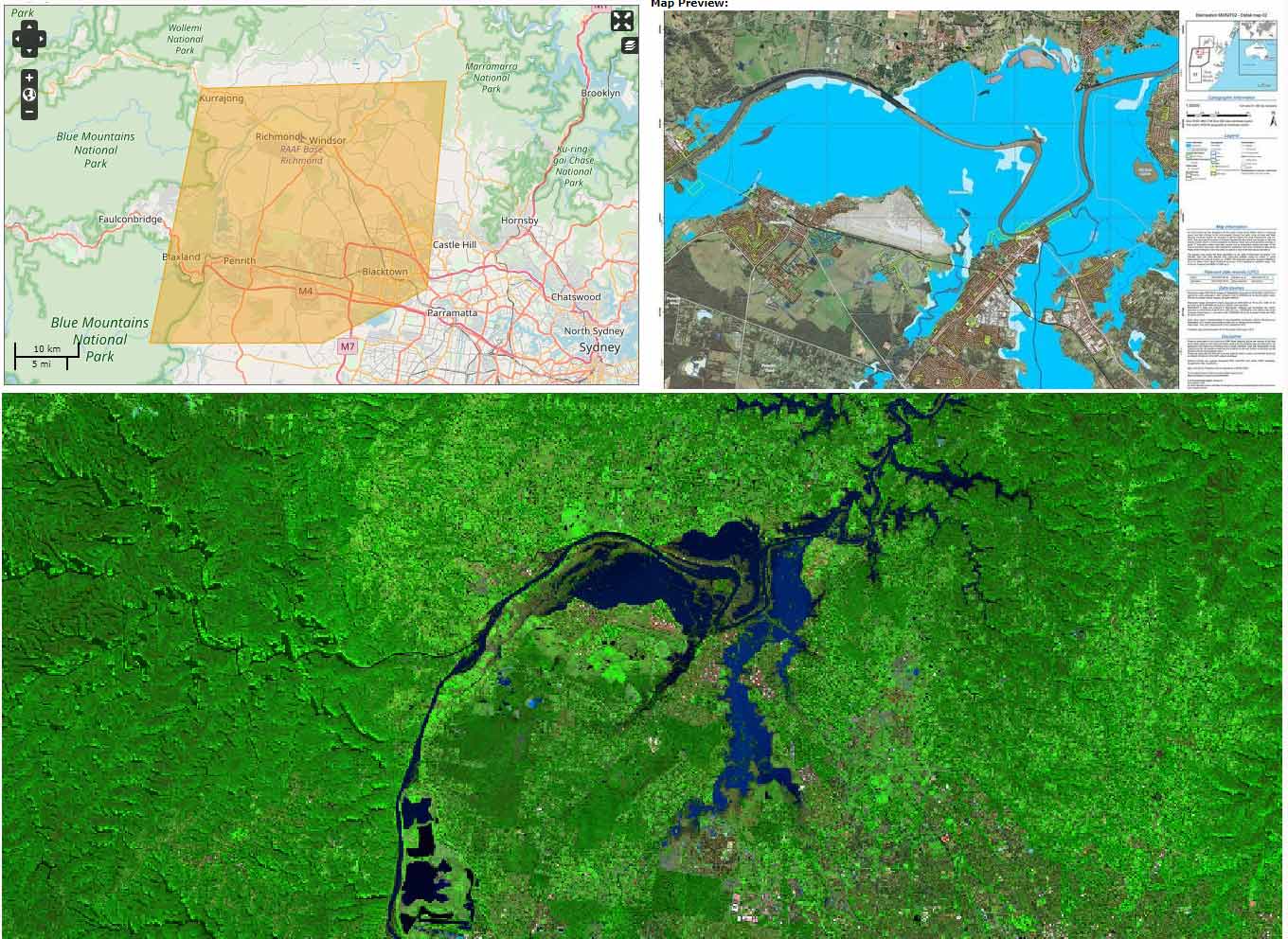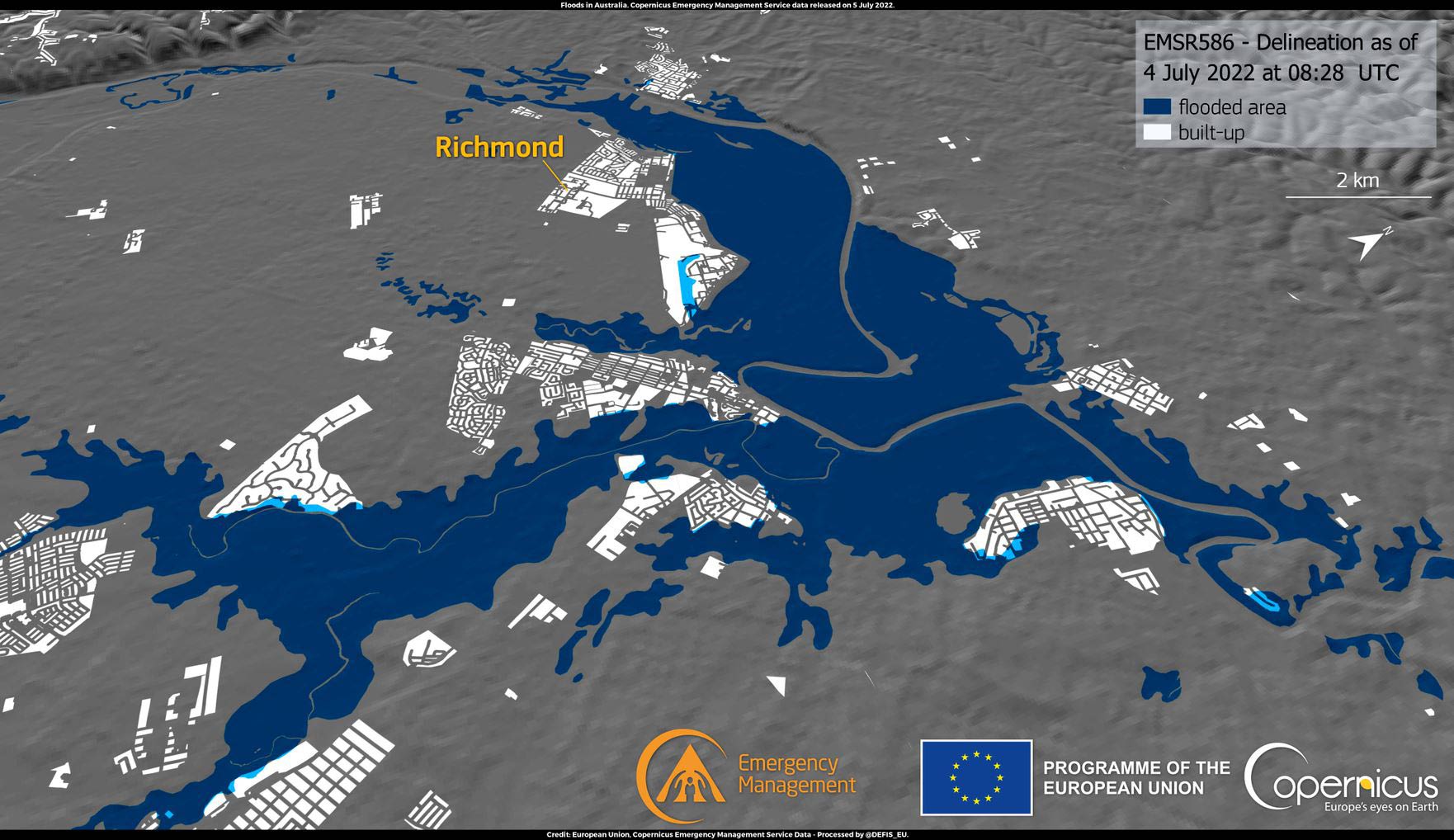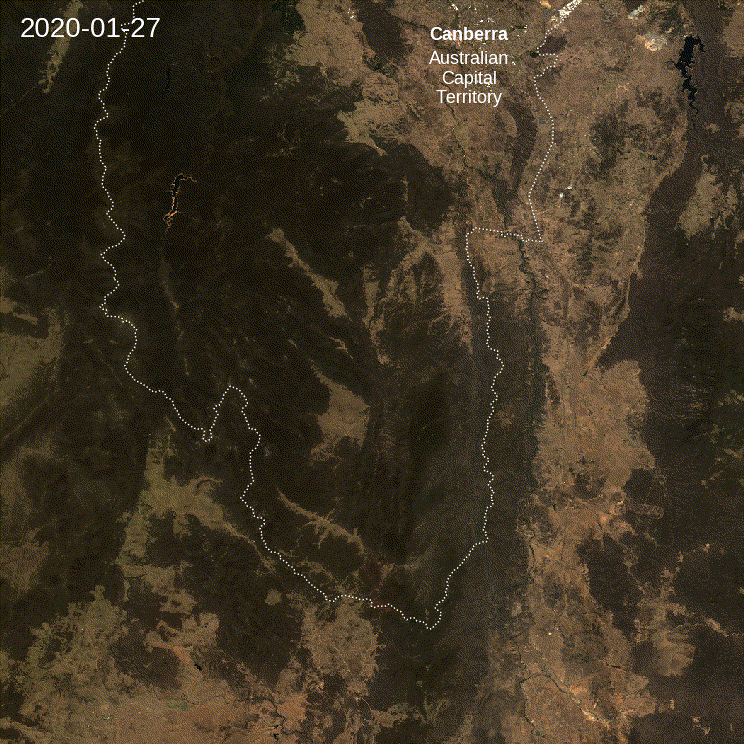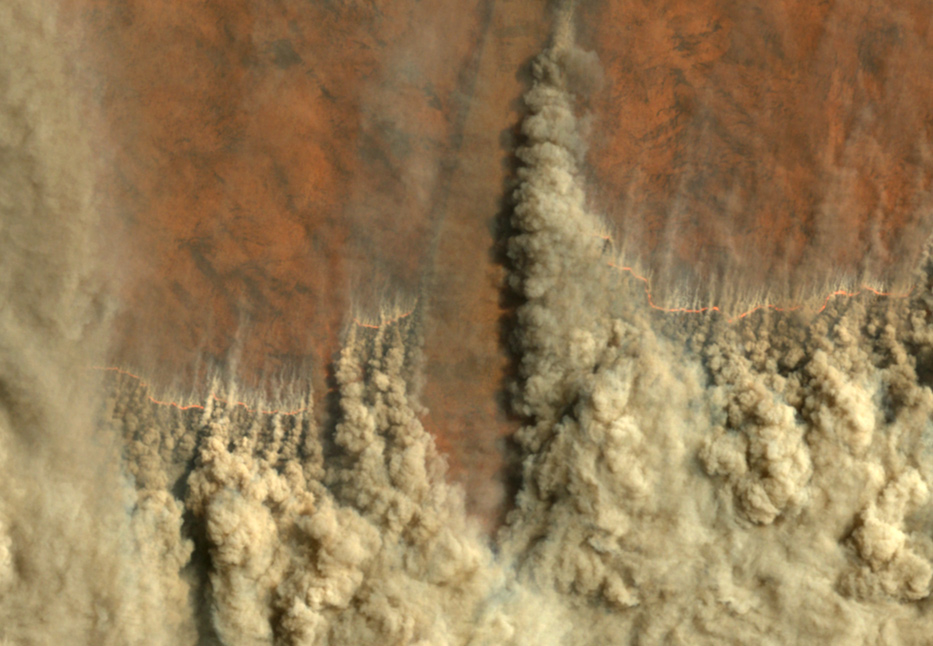News Contributing to the EO and emergency services legacy
Earth observation (EO) organisations and emergency services have a long history of cooperation and knowledge sharing.
Page last updated:18 June 2024
In the 50 years since Landsat1 was launched, EO science and services have become increasingly more accessible. Today there are countless opportunities for data scientists and start-ups to develop new products and insights.
Right now the Northern Territory Department of Industry, Tourism and Trade (DITT) is spurring development of EO-powered solutions for NT problems through the Earth Observation for the NT (EO4NT) grant program.
NT’s DITT has partnered with Geoscience Australia to deliver the program with a total funding pool of $200,000.
Side-by-side comparison of a bushfire at Yamba, NSW on in September, 2019 using a true colour image (left) and SWIR (short-wave infrared, right), revealing the extent of the fire front. Sentinel 2 L2A True colour and L2A SWIR
Applicants can use EO data from any source to develop their solution. Successful applicants will be eligible for training and support from Geoscience Australia to use their EO data platform, Digital Earth Australia.
Applicants are encouraged to develop a solution for any NT industry, using any combination of data, provided some of that data is EO-derived.
However, if you are looking to solve an existing problem rather than search for new ones, DITT is working with the Territory’s emergency services to identify existing challenges that could be addressed using EO-derived solutions.
DITT’s Acting Director of Industry Strategy, Narayan Buckley, said while applicants have free reign to develop any EO solution they desired, finding fixes for Bushfires NT, and NT Police, Fire & Emergency Services would also free up those services’ precious time and resources.
“Solutions that improve emergency services’ ability to plan responses to events such as fire or flood will improve response times and enhance support services to the community,” Narayan said.
Copernicus Emergency Management System Delineation Product, Monitoring 3, version 1, release 1, RTP Map #02 [EMSR586] showing Richmond, NSW flooded in July, 2022 (top) and Sentinel Hub image of Hawkesbury River flooding Richmond and Windsor areas.
“While those that automate existing manual processes would free up work units to focus on providing a more tailored response to support communities.”
EO has a long history of supporting emergency services. One of the first tasks the US Geological Survey Landsat1 mission undertook when it was launched in 1972 was observing a forest fire in a remote part of Alaska.
“For the first time ever, scientists and resource management officials were able to see the full extent of damage from a fire in a single image while it was still burning,” USGS states about the early EO milestone.
Recently, when Australia’s east coast was inundated with flooding for the third time this year, the NSW Government requested activation of the European Union’s Copernicus Emergency Management System (CEMS), a service that uses satellite imagery and other geospatial data to assist emergency responders the world over.
Michael Hope, Geoscience Australia’s Project Manager for the Copernicus Australasia Regional Data Hub, said CEMS helps to map out the impact and extent of emergency situations at the neighbourhood and suburb scale.
“The CEMS Rapid Mapping service delivers regular updated products giving local emergency agencies the big picture on the ground, over the entirety of the event,” Michael said.
The visibility of disaster events can often be hampered by cloud cover, in the case of flooding, or bushfire smoke. To counter this obfuscation, techniques are employed using observation systems beyond the visual, including synthetic aperture radar and infrared detection to penetrate cloud and smoke.
An existing DEA product that assists emergency response management using infrared EO is DEA Hotspots. This near-real-time national monitoring system uses sensors to detect areas producing high levels of infrared radiation, or “hotspots”.
DEA Hotspots uses a colour scale to identify potential fire locations, which helps emergency managers to coordinate responses to impending threats to communities and property.
In a recent interview with Spatial Source, Maggie Arnold, who was responsible for GA’s mission critical applications, said DEA Hotspots had already proved its mettle during the devastating 2019-2020 bushfires.
“During the Black Summer bushfires, DEA Hotspots was used by emergency managers to help identify and monitor potential fire locations that posed a possible risk to communities, properties and electrical infrastructure,” Maggie said.
“With the addition of [Japan’s weather satellite] Himawari-8 Hotspots we can now detect potential new bushfires within 17 minutes of the satellite overpass. Since the Himawari-8 satellite is geostationary, it’s continuously collecting data every 10 minutes over the same area.”
A scrub fire near Costello, Northern Territory, in October, 2011. True colour, 30m resolution Landsat-5.
Bushfires NT said it currently uses EO products to “help manage risk, to plan mitigation activities and to support fire emergency response”.
“The development of EO solutions would increase the ability of Bushfires NT to mitigate risks posed by wildfires to the environment and the community.”
Narayan from DITT said EO4NT will raise awareness within the Territory about how EO-solutions can enhance industry and government operations.
He added that EO4NT is likely to “spur solutions to Territory challenges by encouraging tech solutions providers to connect with local end users to develop their solution”.
View existing EO4NT challenges
Apply for EO4NT via the Grants NT website
Tips for creating a successful EO4NT application – make sure you highlight:
- The problem you are trying to solve, and how it will benefit the Northern Territory
- How you intend to solve the problem from a technical perspective
- The funding you require from the EO4NT program, as well as the funding you (and your project partners if applicable) will be contributing towards the project
- Why your proposed solution has strong market potential










